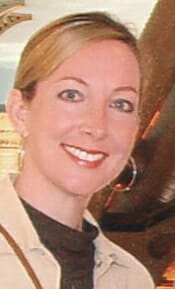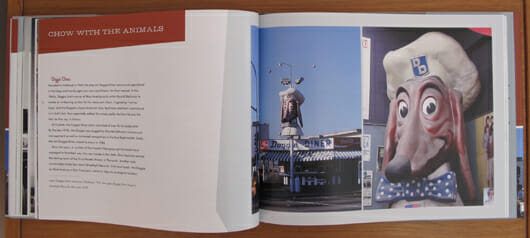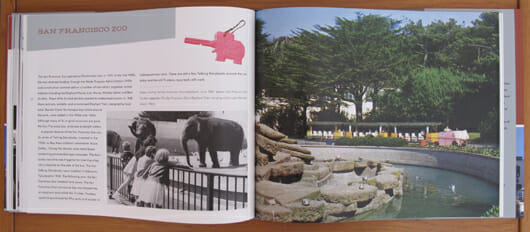by Heather M. David
I met Heather, today’s guest author, at the Mechanic’s Institute Library self-publishing event I attended a few weeks ago. She was doing a presentation as a “successful” self-publisher, and I found her story fascinating. I asked her to explain how she came to be there, and how she came to make the book she did. Here’s her story:
I am a self-publishing “success story”. . . or so I have been told, by a few people, at least. Which invariably leads me to ask the question: “What is the definition of self-publishing success?”
In the world of self-publishing, is “success” the experience of seeing your creative vision realized? Is it about producing a product that is of professional quality? Is it about selling enough books to realize a profit?
To be honest, my personal definition of success varies. It can vary week to week, sometimes day to day. Even though I went into my book project with the realization that, despite my best efforts, I may not see a return on my investment, I have spent the majority of my working life in sales. And so, compliments and kudos aside, if the sales aren’t coming in steadily, I struggle to view myself as successful.
I am a novice when it comes to self-publishing and I can only speak of my one experience, to date—of all the assorted triumphs and pitfalls, of the numerous blessings and disappointments. For with self-publishing in an ever-changing world, there are countless variables and the end result is that it is incredibly difficult to make any solid predictions.
Piece of Advice Numero Uno:
The best way to maintain a positive attitude and avoid disappointment is to have no expectations, or at the very least, pad your expectations. Trust me. If you are expecting something to happen, that pretty much guarantees that it won’t.
One of my first public appearances, following my book’s release, was a slide show/book signing at an upscale store in San Francisco—a store whose clientele, by any reasonable expectation, was the ideal market for my book. A great deal of effort went into marketing and promoting the event, in addition to a considerable sum of money.
On the morning of the big day, I received a call that the appetizers (“refreshments served”) were MIA so my husband and I spent the entire day frantically preparing bite-sized nibbles, when I should have been prepping for my slide show.
Fast forward to the event. A great turnout it was. A professional bartender had been hired and top shelf cocktails were flowing freely. Somehow, despite a considerable amount of anxiety, I managed to pull off the slide show. Compliments were aplenty… “Oh, your book is just FA-BU-LOUS.” Unfortunately, book sales were not. At the end of the evening, I was exhausted and CRUSHED.
Now, compare this experience to a considerably smaller “event” where I was asked to appear at a Kiwanis Club meeting at a local Denny’s. No marketing. No slide show. No drinks. I sold a dozen books in 45 minutes and I even got a free Grand Slam. Which leads me to. . .
Piece of Advice #2
Do not give up. You know the old saying, “When one door closes, another will open.” Well, it’s 100% true. As a child, how much candy would you have come home with if you spent your entire Halloween Trick-or-Treating at ONE house? If you knock on the door and there’s no answer, or if the offering is third-rate candy, what in the world are you waiting for? Head to the next house!
Earlier this year, I was beyond flattered when a museum curator reached out to me about the possibility of carrying my book in several museum gift shops. I was promptly referred to the museum stores buyer who, after some effort, I was able to connect with.
A preview copy of my book was requested and even though the curator already had a copy, and I had provided links to several online previews, I carefully packed a book and made a run to the post office. Several weeks later, I reconnected with the buyer who said that although he was impressed with my book, he was not “inspired” by my pricing.
I explained the reasoning behind the pricing. When you self-publish, and have a relatively small initial print run, your printing cost can be quite high. In addition, I chose to have the book printed in Iceland and the shipping to California alone cost me $2,000. I offered that my book was first edition, not for sale on Amazon, and of local interest. Apparently, Mr. Buyer remained uninspired. I never heard from him again.
In this case, I was not crushed. I was MAD.
So I reached out to another museum and guess what? I received an order for 40 books, my largest order yet. And I didn’t even need to send a preview copy. And they paid their invoice in 30 days! In the end, I was the one who was “inspired.”
Piece of Advice #3:
Be your own #1 fan.
A book is a very personal thing. To create a book requires that you put yourself “out there” in the world and one cannot do this without some vulnerability. Chances are that you have invested a lot of time and money into realizing your vision. If some people do not “get” your vision, that is OK. Do you like every book in a bookstore?
Please know that not everyone is going to appreciate what you have accomplished. That fact, however, does not make your book any less an achievement. The good news is that the world is filled with potential book buyers. There are over 312 million people in the United States alone. Just keep knocking and you are bound to receive some good candy.
In my home office, I have a cork board. The board is a mish-mash of book reviews, articles, event name tags, and special photographs. It is also where I hang outstanding invoices. When I get discouraged, I look over at the board. It is a reminder of how far I have come. And if the board has not changed much in several weeks, it is a not-so-subtle reminder that I still have a way to go.
So back to the burning question—Am I a self-publishing success?
Here are some numbers. I sold 400 books in the first year following my book’s release, with a full-time day job, and no significant investment in advertising. At the end of my second year, I hope (note: hope, not expect) to be halfway through my book inventory of 1,500 books. At the rate that I am going, I will need to sell roughly 1,000 books to break even on my initial investment ($36,000).
Today, I am a self-publishing success. Why? Because I think so. Because a significant number of my book sales come from repeat customers. Because I have witnessed people cry (in a good way) when they turn the pages of my book. Because yesterday I sold a book to someone in New York and I will be making a trip to the post office today. That’s today. Tomorrow, it may be a different story.
 Heather M. David is a cultural historian, freelance writer, and advocate for the preservation of mid-century architecture. She has written numerous articles on American popular culture and historic preservation. Mid-Century by the Bay is her first book, and is available at the Mid-Century By the Bay website.
Heather M. David is a cultural historian, freelance writer, and advocate for the preservation of mid-century architecture. She has written numerous articles on American popular culture and historic preservation. Mid-Century by the Bay is her first book, and is available at the Mid-Century By the Bay website.





